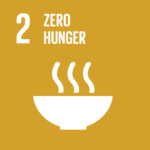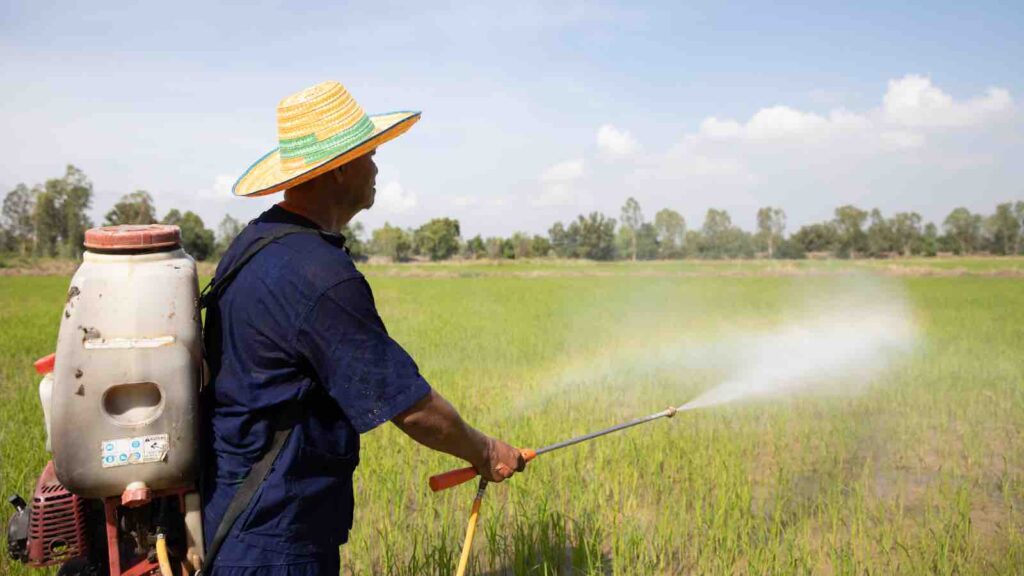Emissions of nitrous-oxide (N2O) — a potent greenhouse gas — have continued to rise unabated over the past four decades, according to an international team of scientists.
According to a new study, human-caused emissions of the greenhouse gas nitrous oxide (N2O) have surged by a staggering 40% over the past four decades. The second Global Nitrous Oxide Budget also reveals an accelerating annual growth rate of N2O emissions, with agriculture as the principal source.
RELEVANT SUSTAINABLE GOALS



Significant increase in nitrous-oxide emissions from human activities
Known as the forgotten greenhouse gas, N2O packs a warming punch 300 times greater than carbon dioxide (CO2). While used medically as an anesthetic dubbed “laughing gas” and recreationally in small canisters called “whippets,” its creation as a byproduct of nitrogen-based fertilizer use worldwide has made it a global target among greenhouse gases.
Along with CO2, N2O is a gas that needs to be reined in to keep average temperatures from rising more than 2 degrees Celsius above pre-industrial levels. CO2 contributes 65% of annual global emissions, methane adds 16% of CO2-equivalent emissions, and N2O around 7%.
“Over the last three years, we’ve seen an even faster growth rate in the accumulation of N2O into the atmosphere – almost 30% faster than the previous decade,” said CSIRO Chief Environmental Research Scientist Pep Canadell, also an author of the new study, quoted by the Australian Broadcasting Corporation on Wednesday.
According to Dr. Canadell, Executive Director of the Global Carbon Project, the number one cause is humans producing more of it. He said there is also a compounding N2O feedback loop where as the Earth warms, there will be increased emissions of the gas from nature – like tropical forest soils.
However, most of the N2O emissions influencing climate change are anthropogenic, meaning stemming from human activities.
Climate scientist Joeri Rogelj of Imperial College London, who was not involved in the new study, said the N2O budget is an authoritative examination of the gas’s sources.
The lead author of the sixth Intergovernmental Panel on Climate Change report, Professor Rogelj said N2O emissions need to come down around 20-25% by 2050 to be in line with the Paris Agreement goal of keeping warming below 2C or even 1.5C.
“The dominant sector emitting N2O is agriculture, and those emissions are still growing. So there is still a lot of work to be done. Sharing and implementing best practices is critical to keep these emissions as low as possible,” he stated.
Collectively, European nations excluding Russia were once the largest N2O contributors but have cut emissions by 31% since the 1980s. However, the European, U.S., Japanese, Korean, Russian and Australian declines have been offset by rises elsewhere. China and South Asia – largely the Indian subcontinent countries – are now the biggest contributors.
Growth in emissions of ‘forgotten greenhouse gas’ nitrous oxide
Based on the latest N2O budget, around 74% of anthropogenic N2O emissions over the past decade came from the agricultural sector. For Peter Grace, a researcher at Queensland University of Technology who studies agricultural greenhouse gases, the rise in N2O emissions is unsurprising. He said more nitrogen fertilizer is being used to boost production to help feed the growing global population. “There has also been more livestock production increasing the amounts of manure, a nitrogen source,” said Professor Grace.
The global population grew from around 3.08 billion people in 1961 to 7.7 billion in 2019. Over that same period, nitrogen fertilizer production increased 95% to 122.74 million tonnes per year from 12.94 million.
Fertilizer Emission Targets
Some countries have introduced fertilizer emission targets or use limits to try to slow N2O’s contribution. New Zealand capped the amount of nitrogen fertilizer that can be used per hectare in 2021.
Canada set a voluntary 30% reduction by 2030 from 2020 fertilizer emission levels but was criticized for a lack of consultation with the agricultural industry.
The Australian federal government has not yet revealed plans to cut greenhouse gases from the agriculture and land sector. The majority of Australia’s agricultural industry greenhouse gas emissions in 2020-21 were methane (79%), followed by N2O (18%) and CO2 (4%).
While not one of the world’s largest N2O emitters, there is discussion around what can be done to reduce emissions for crops like sugarcane that use heavy nitrogen fertilizer inputs.
According to Professor Grace, there are efforts to improve nitrogen use efficiency, but the current methods available come at a premium cost to farmers. “So uptake of this technology is still limited,” he said. Professor Grace authored a white paper for Fertilizer Australia, the nation’s leading fertilizer industry group, outlining options to cut agricultural greenhouse gas production without impacting yields.
The white paper recommends the federal government subsidize fertilizer companies to add chemicals to urea, the most common nitrogen fertilizer, at no cost to farmers in order to reduce the nitrogen oxides produced.
Lead image courtesy of x-reflexnaja from Getty Images
You may also be interested in :
MethaneSat : A Groundbreaking Satellite To Track Global Methane Emissions From Oil and Gas


